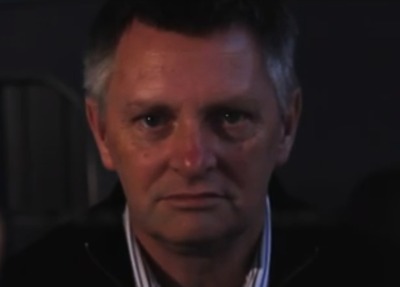 We managed to obtain an exclusive interview with one of the world’s leading print researchers, Professor Stephen Hoskins. Professor Hoskins’ group has recently been investigating the potential of 3D printing.
We managed to obtain an exclusive interview with one of the world’s leading print researchers, Professor Stephen Hoskins. Professor Hoskins’ group has recently been investigating the potential of 3D printing. Fabbaloo: You’re the Hewlett Packard Professor of Fine Print and Director of the Centre for Fine Print Research at the University of the West of England. Can you tell us what the Centre does?
Stephen Hoskins: At the Centre for Fine Print Research (CFPR) at the University of the West of England, our research explores all aspects of print and printing technologies, from traditional 19th Century printmaking processes to the most up-to-date technologies in rapid prototyping and Additive Layer Manufacturing. At the CFPR we have a strong interdisciplinary team which includes print artists and 3D designers as well as technologists and industrial specialists, and much of our research takes places at the intersection of art, science and creative technologies. We regularly enjoy collaborating with leading international artists as well as high-technology companies such as Hewlett Packard and Roland, with the aim of extending the range of creative applications for print technology.
Stephen Hoskins: Here at CFPR we have been working for some time on the 3D printing of ceramics by the powder-binder method (Z-Corp). We have developed a new 3D printable ceramic powder which is compatible with the Z-Corp 3D printing process. This means that objects can be designed on computer, 3D printed, and then fired in a kiln and glazed in the traditional way. The ceramic material has been developed by CFPR Research Fellow David Huson, and myself and has been patented and licensed to the American company Viridis 3D with whom we are collaborating with to commercialise the results of our research.
Fabbaloo: We understand you’ve been working on some interesting projects. Can you describe some of them?
Stephen Hoskins: Following on from our research into the 3D printing of ceramics, we have just received a large funding grant from the UK’s Arts and Humanities Research Council to develop a self-glazing 3D printable ceramic material. This project will investigate Ancient Egyptian ceramic recipes and explores the potential for a 3D printable ceramic body which can be fired and glazed in one firing. Another area of our research explores 3D printing and “smart” artificial muscle materials for applications in robotics and interactive art. One outcome of this research is a 3D printed “smart” robotic tentacle which moves in a lifelike way when stimulated by an electric current. This work was reported here by Objet Geometries, including a video of the tentacle in action.
Fabbaloo: Ceramic prints would not likely be used for industrial applications; do you see a future for artistic applications of 3D printing vs. industrial parts production?
Stephen Hoskins: We get an awful lot of enquiries from a whole range of industries who see potential for our ceramic 3D printing material for use in technical and industrial applications. Many of these potential applications are commercially confidential so it is not possible to go into detail here, however it is clear to us that the 3D printing of ceramics results in some unique physical properties not normally seen in conventionally formed ceramics. Because we work with industry as well as the visual arts and design, we are therefore in a strong position to exploit the artist and technological outcomes of our research.I have just been interviewed by the AHRC and the film can be found here.


